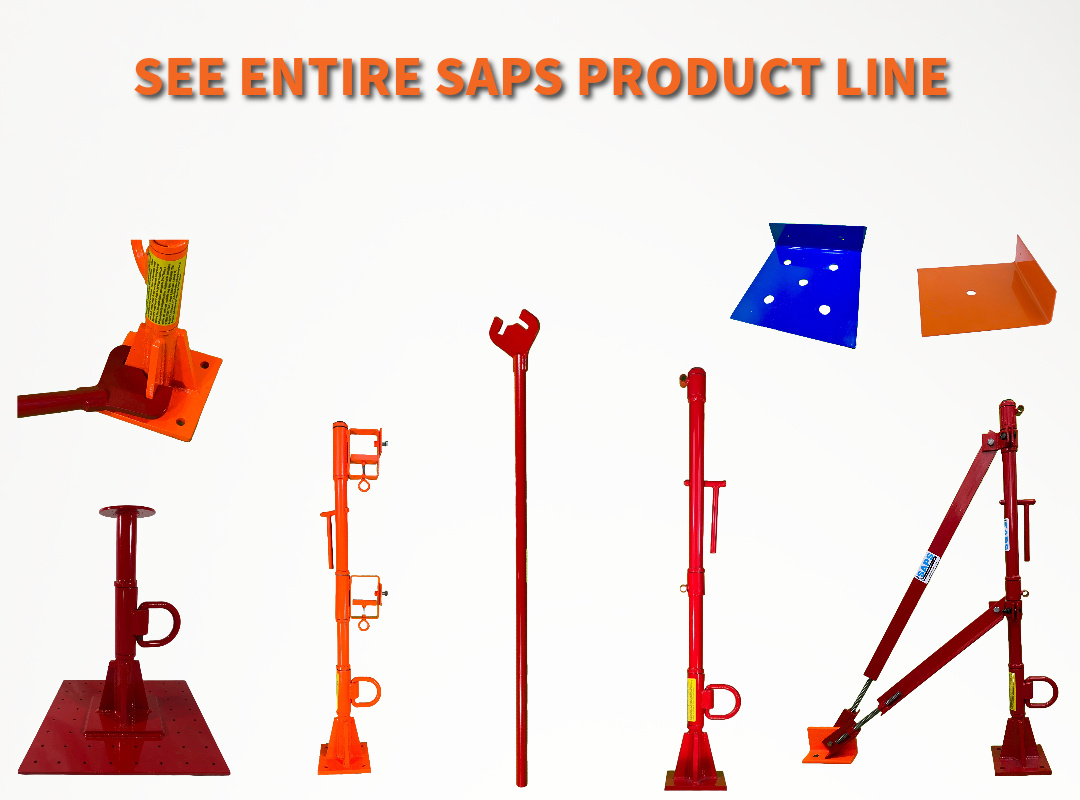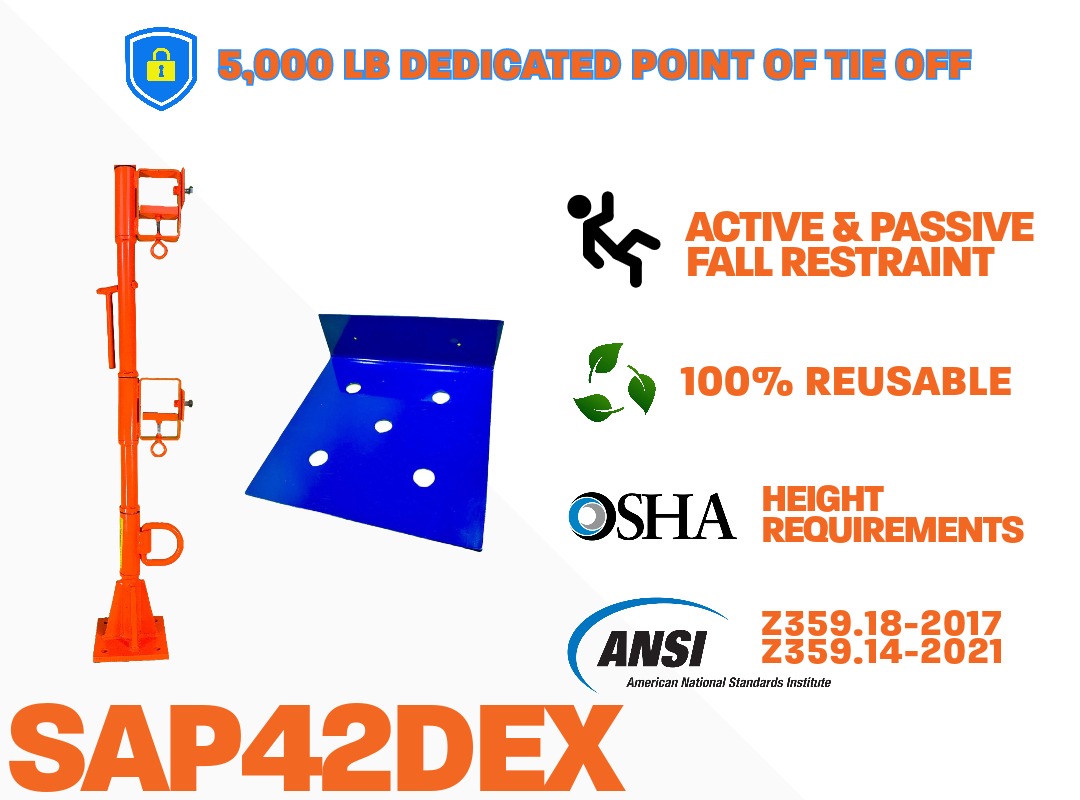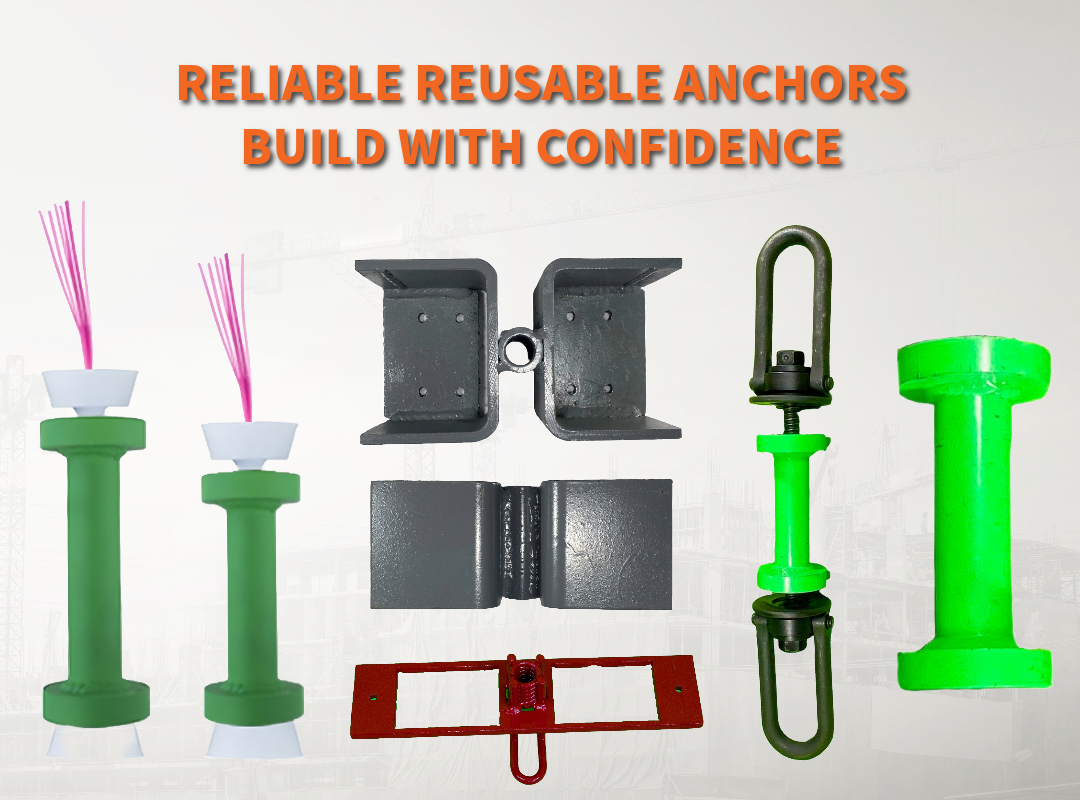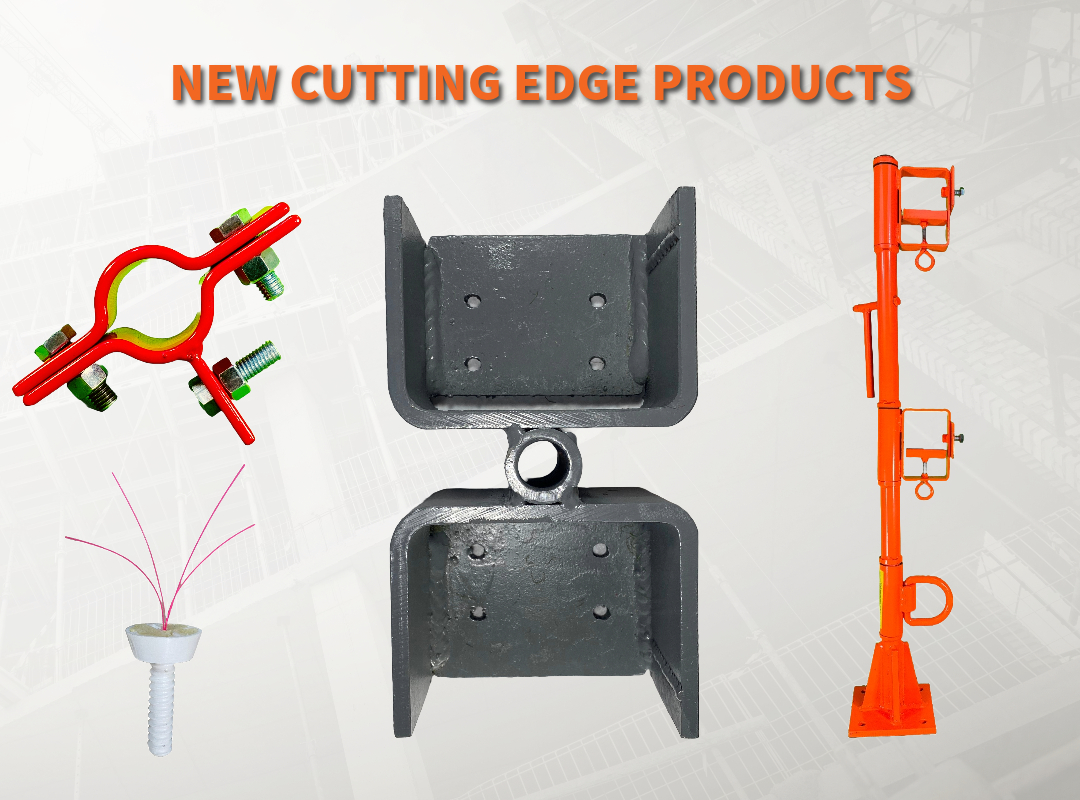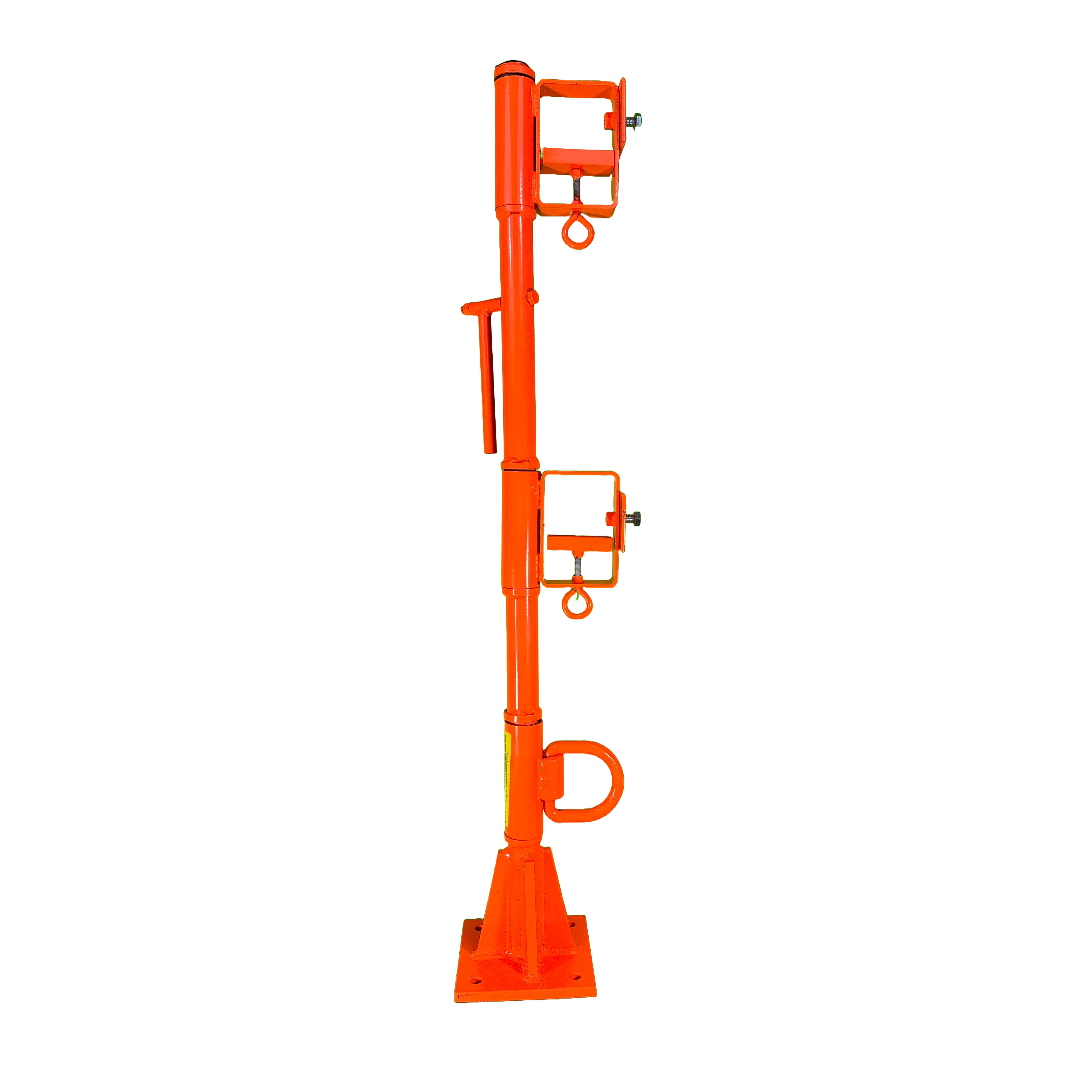Concrete construction is one of the most common and challenging types of construction projects. It involves working with heavy and hard materials, such as concrete, rebar, and steel. It also involves working at heights, such as on roofs, balconies, and bridges. These factors increase the risk of falls and injuries for workers, which can result in serious or fatal consequences.
According to the Occupational Safety and Health Administration (OSHA), falls are the leading cause of fatalities in the construction industry. Therefore, it is essential to use proper equipment and techniques to prevent falls and minimize the risk of injuries or death.
One of the most important components of a fall protection system is the anchor point. The anchor point is the location where the personal fall arrest system (PFAS) is attached to the structure. The anchor point must be able to withstand the forces generated by a fall and provide a sufficient margin of safety. OSHA requires that anchor points for PFAS must be capable of supporting at least 5,000 pounds per worker attached, or be designed, installed, and used under the supervision of a qualified person as part of a complete PFAS that maintains a safety factor of at least two.
There are different types of anchor points available for different situations and structures. One of the most innovative and convenient options is the SAP42D Safety Anchor Post System from Safety Anchor Post Systems (SAPS). The SAP42D Safety Anchor Post System is a surface-mounted guardrail system with a positive, threaded anchorage system embedded within the concrete slab. It also has a dedicated D-ring for a tie-off point. The SAP42D Safety Anchor Post System is designed and tested to meet the OSHA standards for anchor points and the ANSI Z359.18-2017 standard for anchorage connectors.
In this blog post, we will explain how to use the SAP42D Safety Anchor Post System for concrete construction and what are its benefits.
What is the SAP42D Safety Anchor Post System?
The SAP42D Safety Anchor Post System is a surface-mounted guardrail system that consists of two main components: the SAP42D Safety Anchor Post and the SAP42D Guardrail Post.
The SAP42D Safety Anchor Post is a tubular post with a swivel D-ring near its base that is an approved fall arrest anchor. The swiveling D-ring provides fall protection while installing mid and top rails and for leading edge tasks. The SAP42D Safety Anchor Post has a minimum breaking strength of 10,000 pounds and a maximum capacity of 310 pounds, including the worker and the equipment.
The SAP42D Guardrail Post is a tubular post with a quick-lock mechanism that allows for easy installation and removal of guardrails. The SAP42D Guardrail Post can be used to create a passive fall prevention system that creates a barrier around the edge of a work area. The SAP42D Guardrail Post exceeds OSHA’s 200 pound side load requirements.
The SAP42D Safety Anchor Post System is installed into a pre-drilled hole in the concrete slab using a chemical adhesive. The system can be used for horizontal, vertical, or overhead applications. The system can accommodate different thicknesses and orientations of concrete slabs, providing a flexible and versatile solution for various applications.
The SAP42D Safety Anchor Post System is reusable, unlike angle iron stanchions that are typically discarded after use. The system can be easily removed and reused in another location, as long as the hole is properly cleaned and filled with new adhesive. This reduces the material and environmental costs of the project, as well as the waste and disposal issues.
How to Use the SAP42D Safety Anchor Post System?
To use the SAP42D Safety Anchor Post System, you will need the following tools and materials:
- A drill with a hammer function and a drill bit suitable for the substrate and the anchor size. The SAP42D Safety Anchor Post System comes in two sizes: 3/8 inch and 1/2 inch. The drill bit should match the anchor size and have a length of at least 6 inches.
- A vacuum cleaner or a brush to clean the hole after drilling.
- A chemical adhesive compatible with the substrate and the anchor. The adhesive should have a high bond strength and a fast curing time. SAPS recommends the Hilti HIT-HY 200 Adhesive, which is a hybrid mortar that bonds to concrete, masonry, steel, wood, and other materials.
- A dispenser for the adhesive, such as a caulking gun or a manual dispenser.
- A torque wrench to tighten the anchor to the required torque. The SAP42D Safety Anchor Post System requires a torque of 25 ft-lbs for the 3/8 inch size and 50 ft-lbs for the 1/2 inch size.
- A guardrail system compatible with the SAP42D Guardrail Post. The guardrail system should consist of top rails, mid rails, and toe boards that meet the OSHA standards and regulations for guardrails, such as the height, strength, and spacing requirements.
- A harness, a lanyard, and a connector compatible with the SAP42D Safety Anchor Post and the PFAS. The harness should fit snugly and comfortably on the worker and have a dorsal D-ring for attaching the lanyard. The lanyard should have a shock absorber and a self-locking snap hook. The connector should have a gate strength of at least 3,600 pounds and be compatible with the swivel D-ring of the anchor.
The following steps describe how to use the SAP42D Safety Anchor Post System:
- Select a suitable location for the anchor point. The location should be within the worker’s reach and allow for a clear and unobstructed fall path. The location should also be free of sharp edges, abrasions, corrosion, or other damage that could affect the integrity of the anchor or the lifeline. The substrate should be solid and capable of supporting the anchor and the load. The minimum substrate thickness for the SAP42D Safety Anchor Post System is 4 inches for concrete and 6 inches for wood.
- Mark the center of the hole on the substrate using a pencil or a marker. The hole should be perpendicular to the surface and aligned with the direction of the fall.
- Drill the hole using the drill and the drill bit. The hole should have a depth of at least 4 1/2 inches for the 3/8 inch anchor and 5 1/2 inches for the 1/2 inch anchor. The hole should be clean and uniform, without any cracks or voids.
- Clean the hole using the vacuum cleaner or the brush. Remove any dust, debris, or moisture from the hole. The hole should be dry and free of contaminants before applying the adhesive.
- Apply the adhesive into the hole using the dispenser. Follow the manufacturer’s instructions for the adhesive application and curing time. The adhesive should fill the hole completely and evenly, without any air pockets or gaps. The adhesive should also protrude slightly from the hole to ensure a good bond with the anchor.
- Insert the anchor into the hole with the swivel D-ring facing up. Twist the anchor slightly to distribute the adhesive evenly around the rod. Do not apply any force or hammering to the anchor, as this could damage the anchor or the substrate. The anchor should be flush with the surface or slightly below it, depending on the application.
- Tighten the anchor using the torque wrench. Apply the required torque to the anchor until the wrench clicks. Do not over-tighten or under-tighten the anchor, as this could affect the performance and safety of the anchor. The anchor should be firmly secured in the hole and not move or rotate.
- Wait for the adhesive to cure before using the anchor. The curing time may vary depending on the type and amount of adhesive, the temperature and humidity of the environment, and the substrate condition. Refer to the adhesive manufacturer’s instructions for the exact curing time and conditions. Do not use the anchor until the adhesive is fully cured and hardened.
- Attach the guardrail system to the SAP42D Guardrail Post. Follow the guardrail system manufacturer’s instructions for the installation and use of the guardrails. The guardrails should be securely attached to the SAP42D Guardrail Post using the quick-lock mechanism. The guardrails should also meet the OSHA standards and regulations for guardrails, such as the height, strength, and spacing requirements. The guardrails should create a barrier around the edge of the work area and prevent workers from falling over the edge.
- Attach the PFAS to the SAP42D Safety Anchor Post. Follow the PFAS manufacturer’s instructions for the installation and use of the harness, lanyard, and connector. The PFAS should be securely attached to the swivel D-ring of the SAP42D Safety Anchor Post using the self-locking snap hook. The PFAS should also meet the OSHA standards and regulations for PFAS, such as the maximum arresting force, the maximum free fall distance, and the clearance distance. The PFAS should stop a worker from hitting the ground or a lower level in the event of a fall.
The SAP42D Safety Anchor Post System is now ready to use. You can work safely and confidently on the concrete construction project, knowing that you have a reliable and convenient anchor point and guardrail system for your fall protection.


